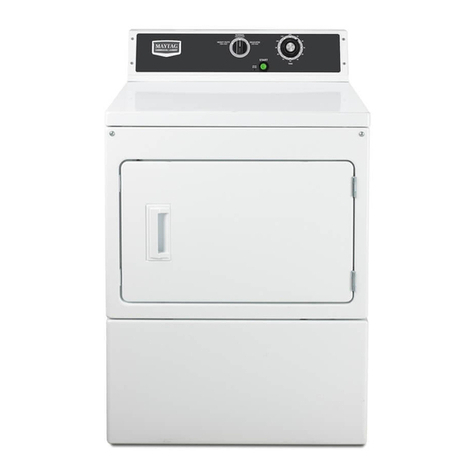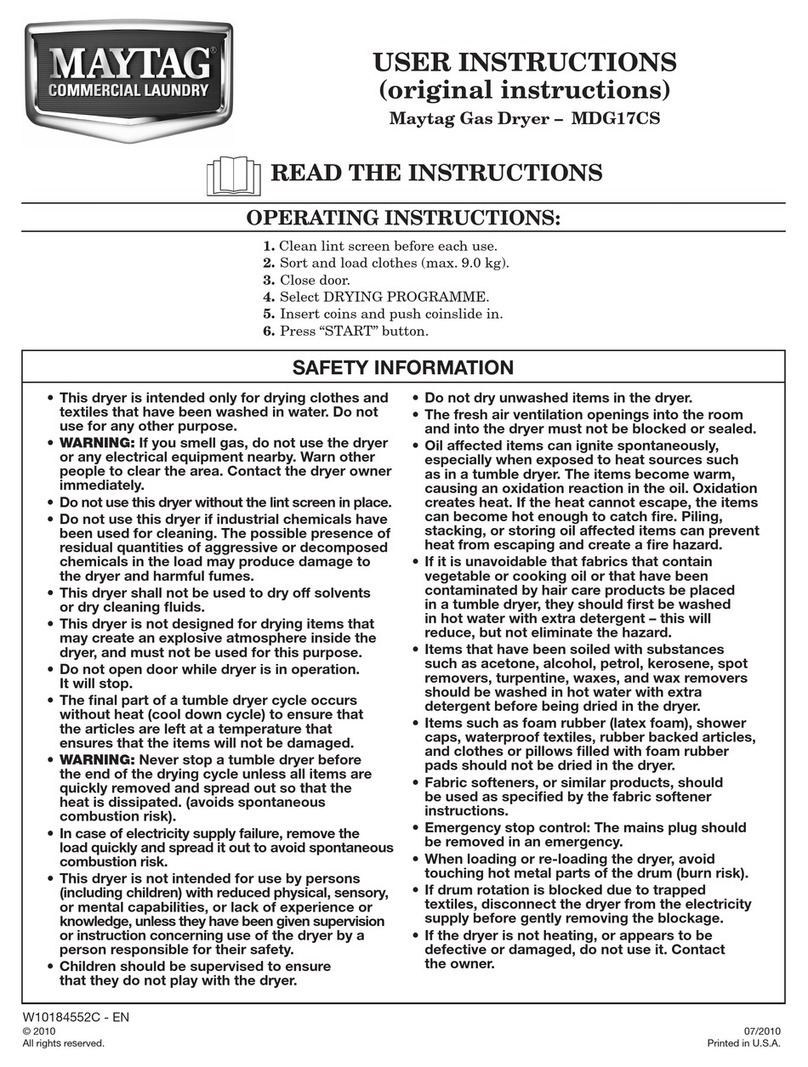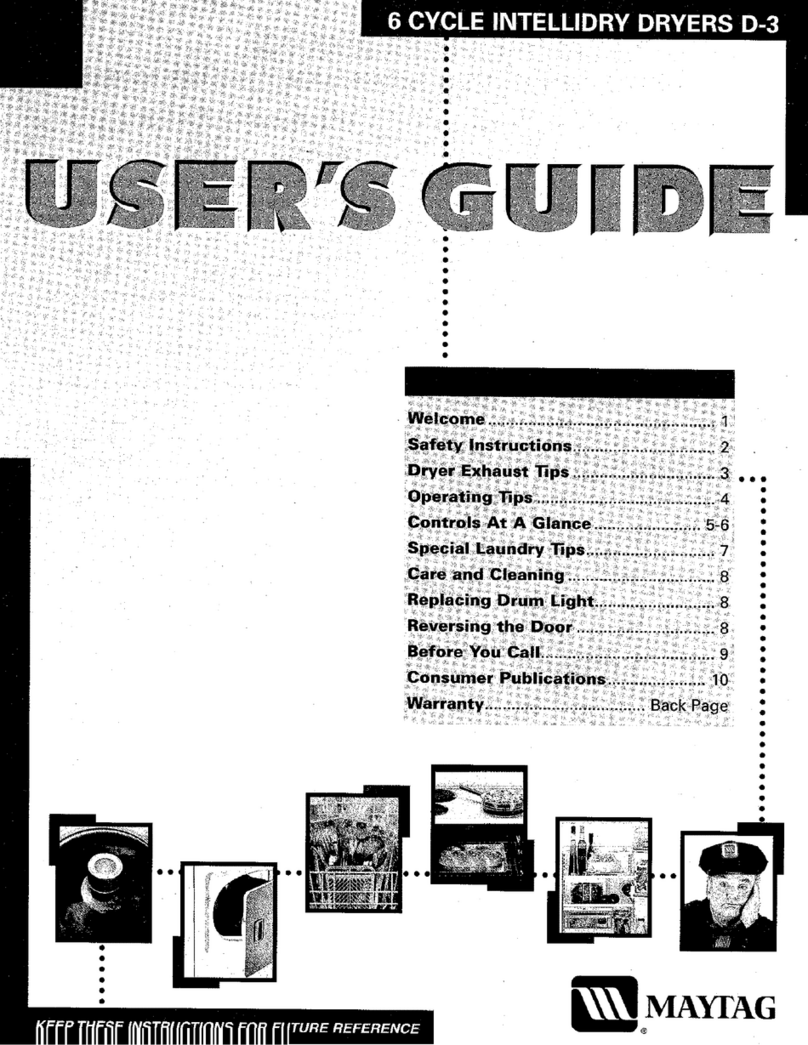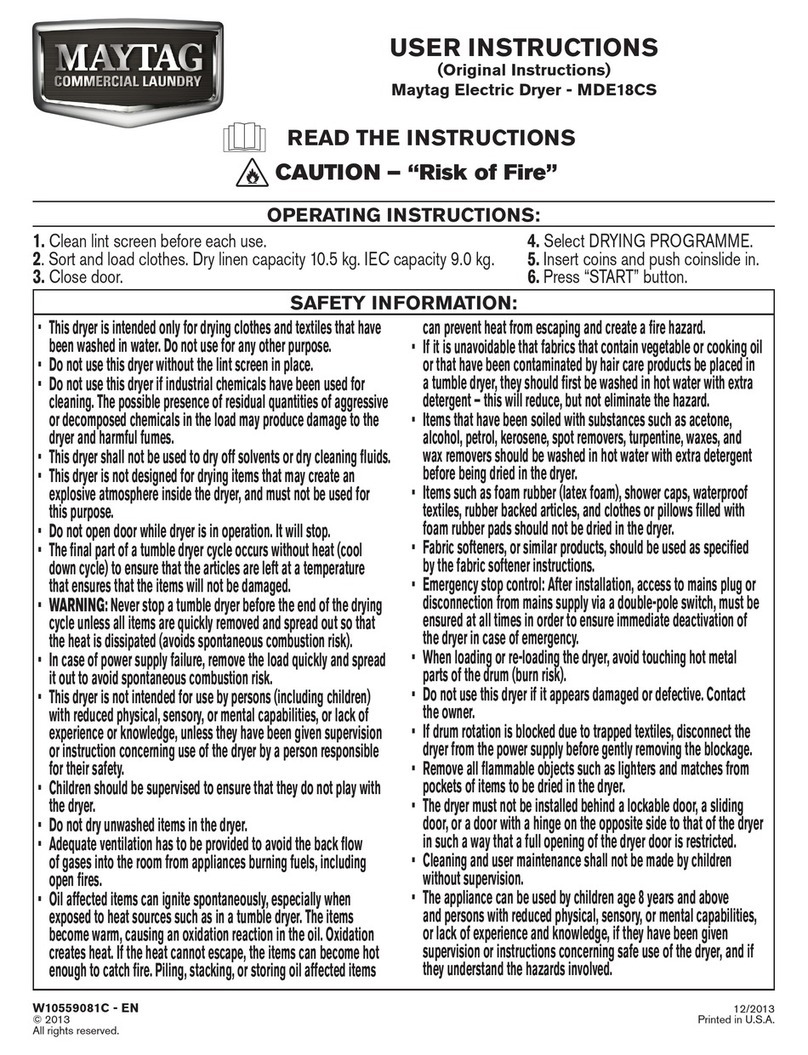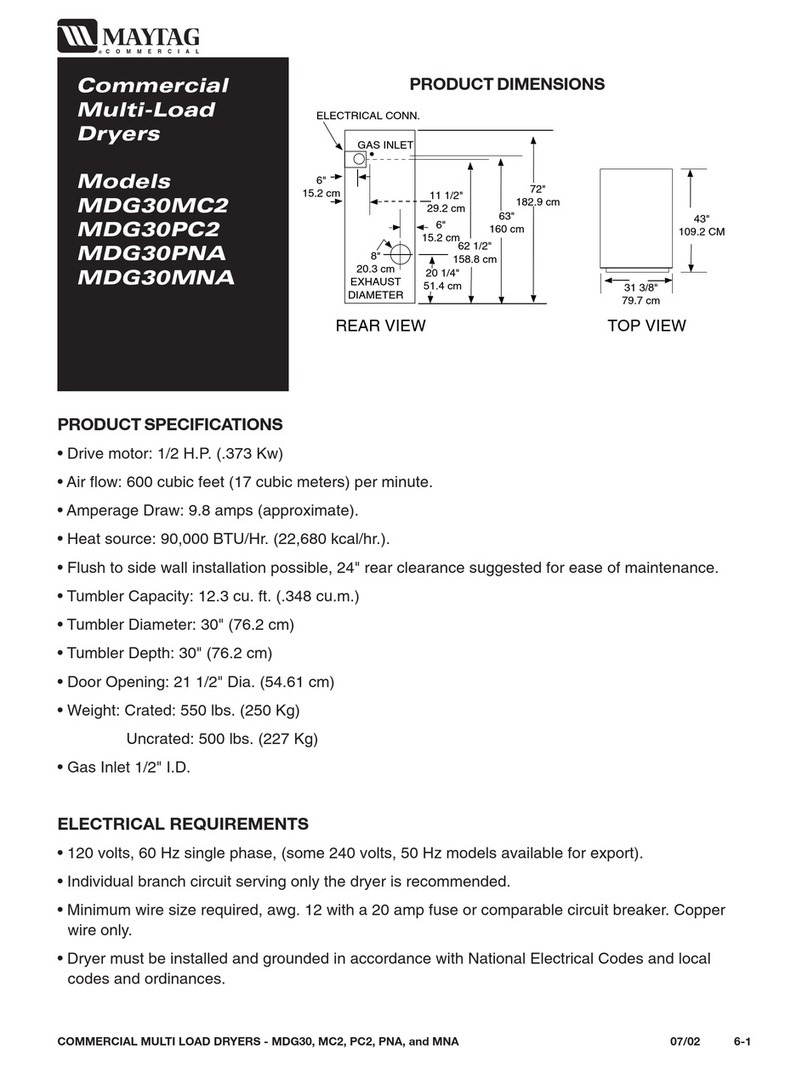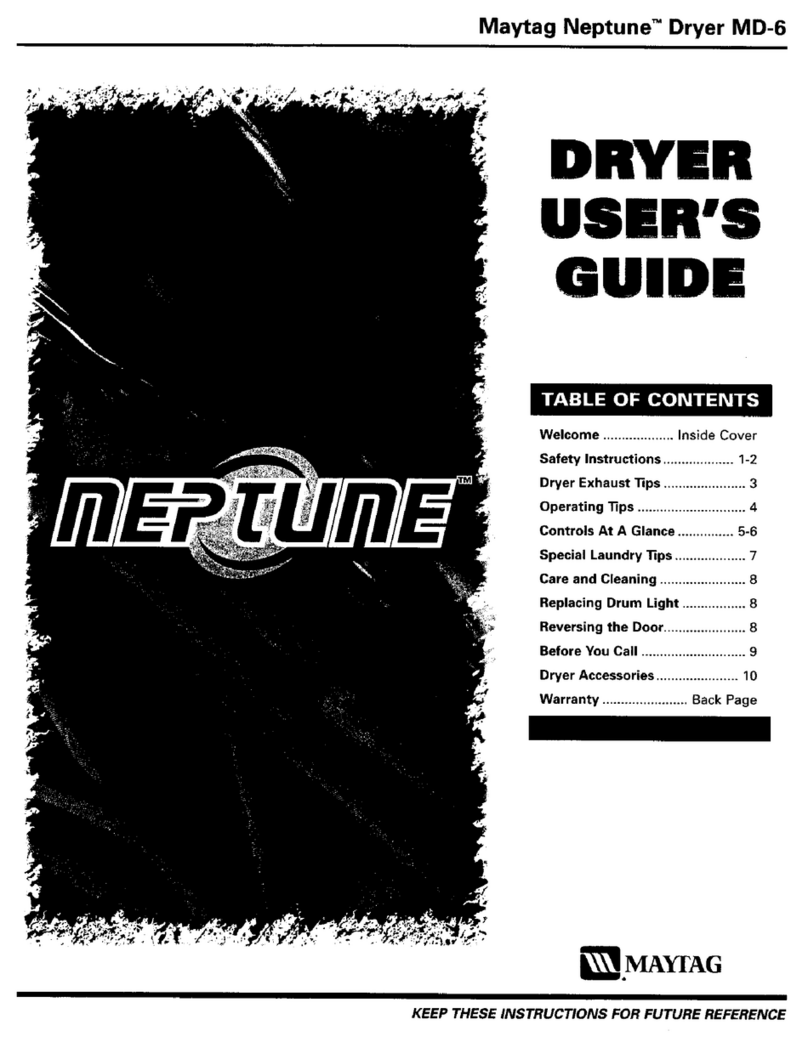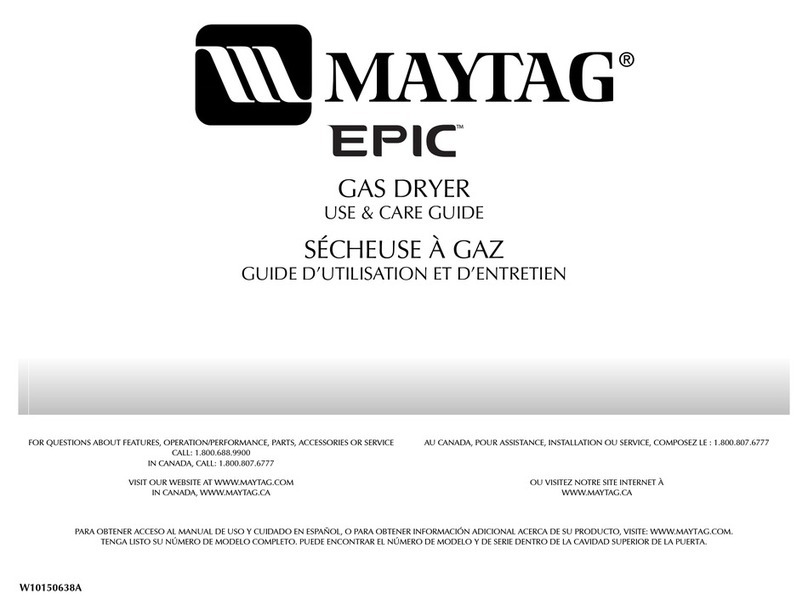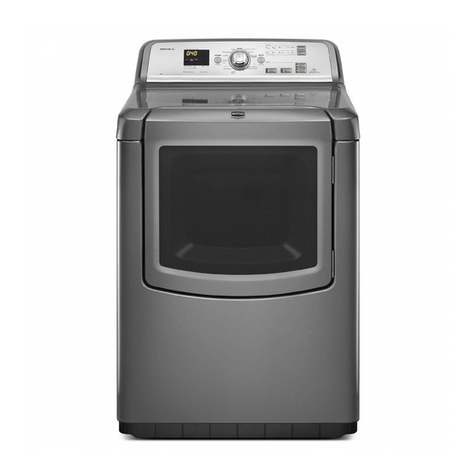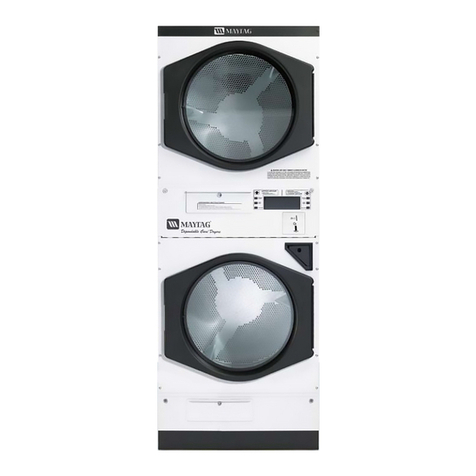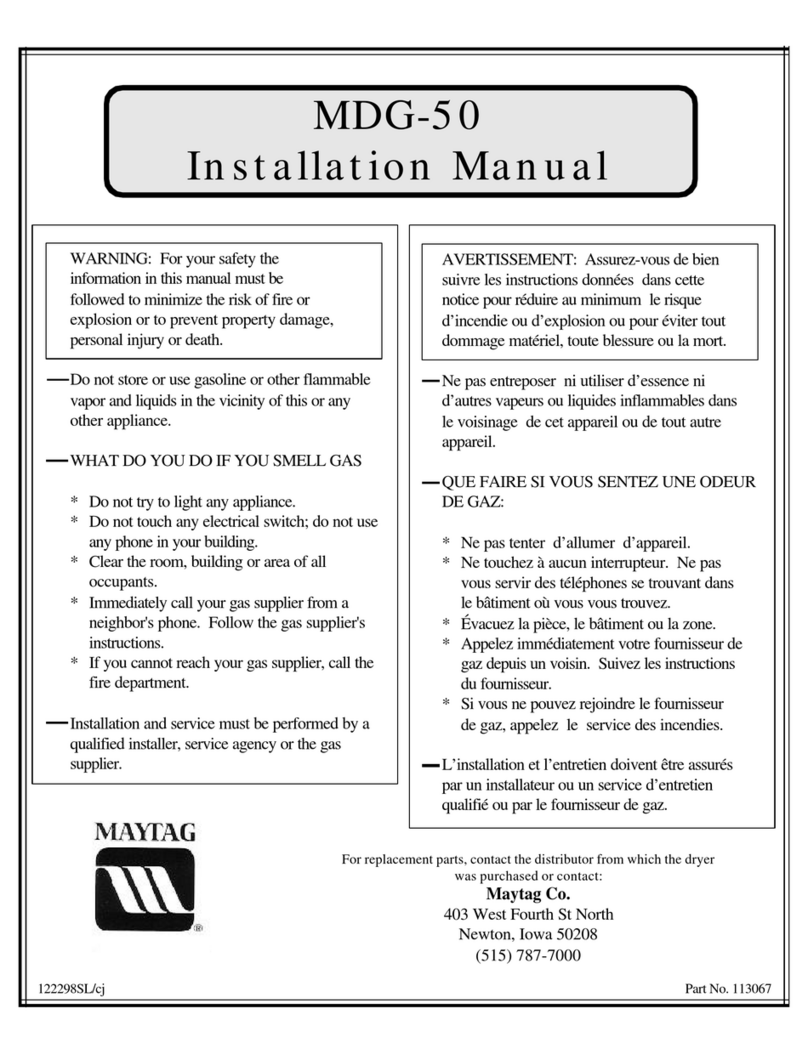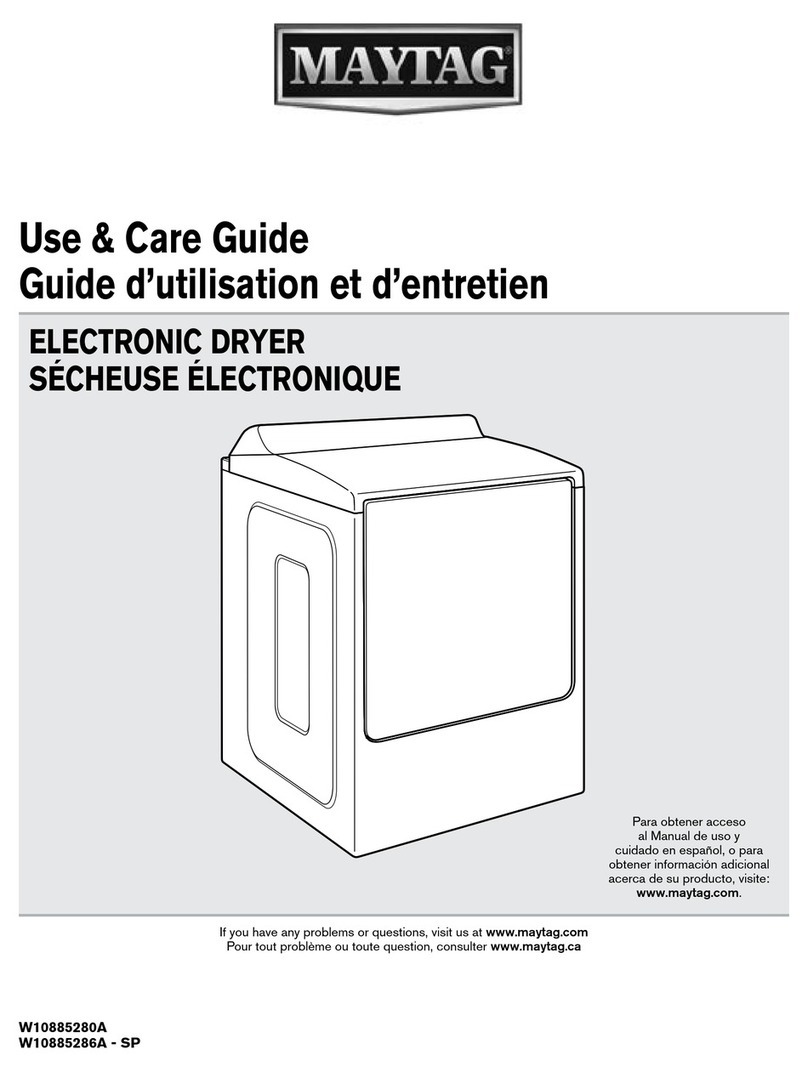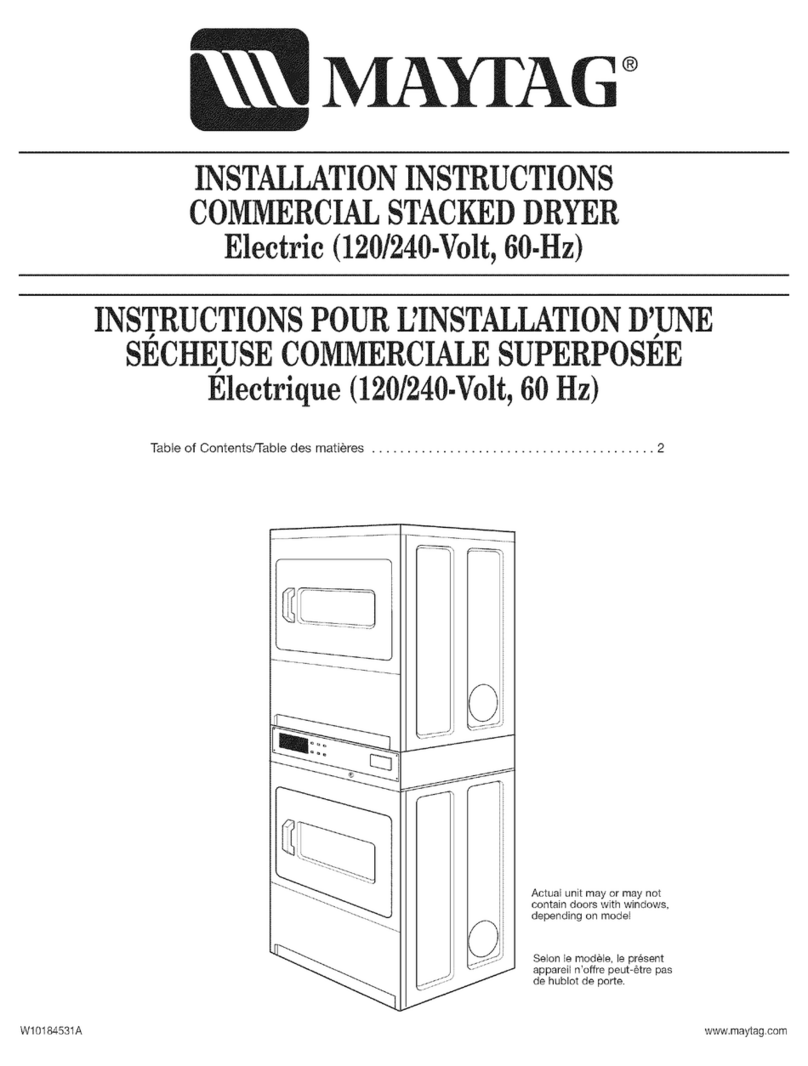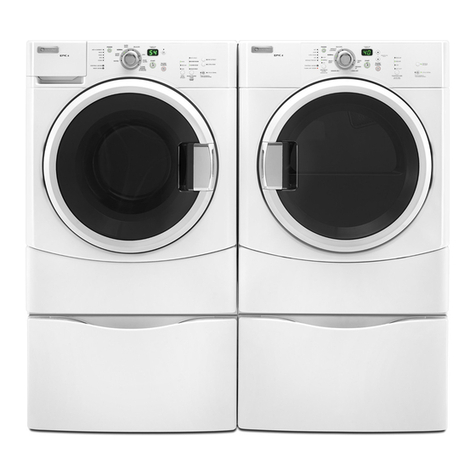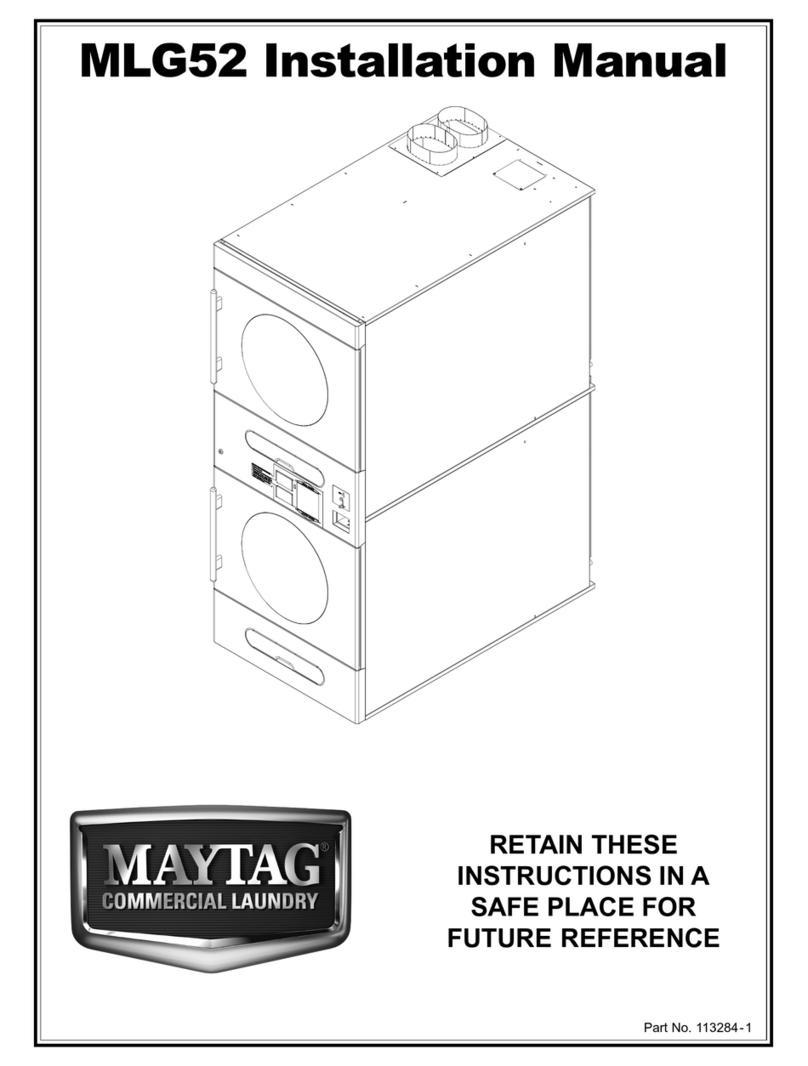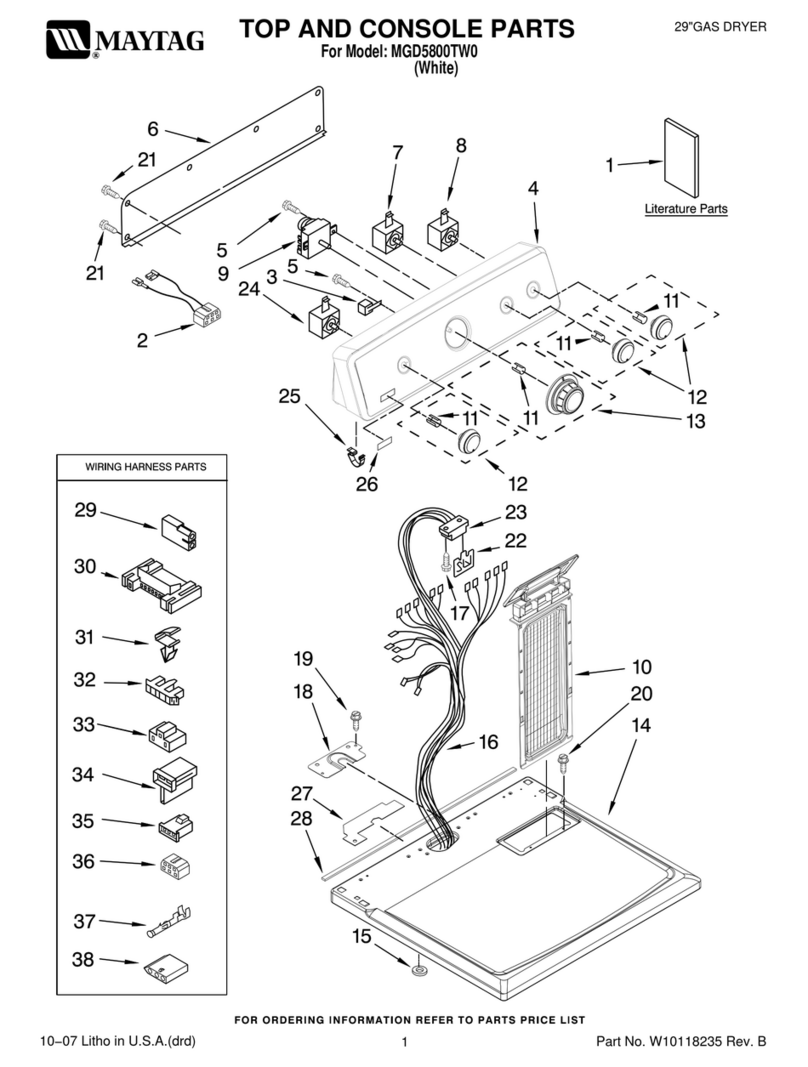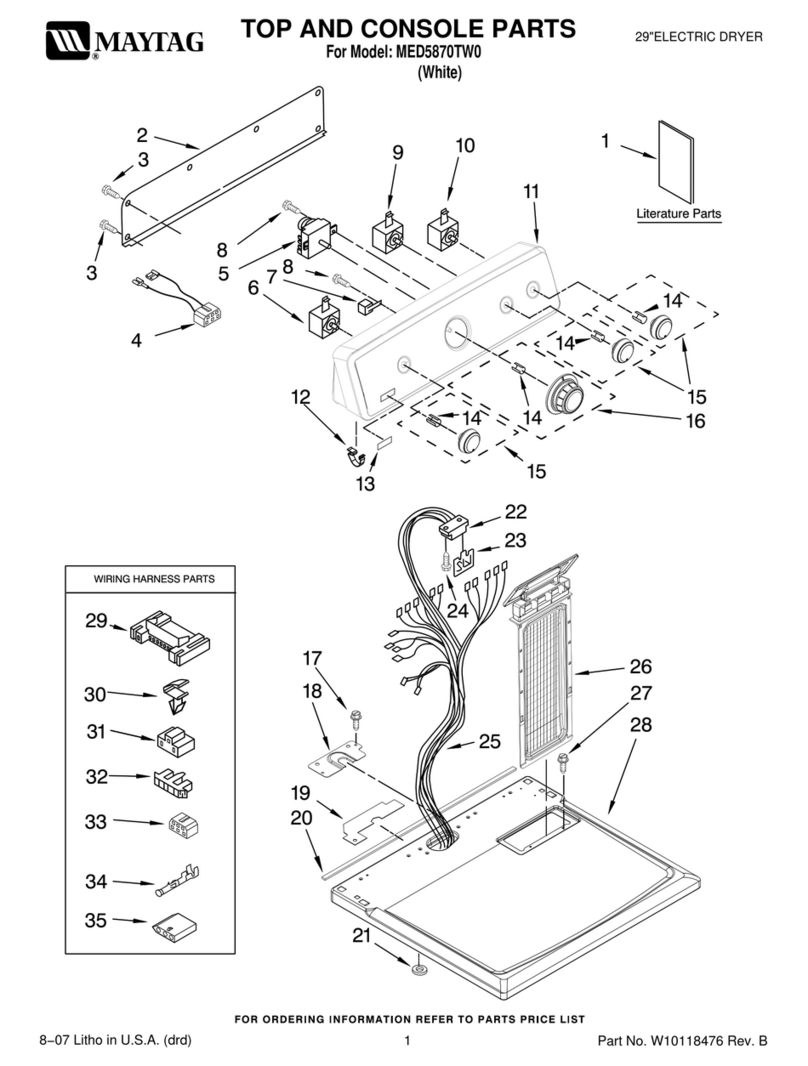
113249-2 Maytag Co. 7
Installation Procedures ______________
!WARNING
Excessive Weight Hazard
Use two or more eo le and mechanical equi ment
to lift, move and install dryer.
Failure to do so can result in back or other injury.
Installation should be performed by ompetent professional
in a ordan e with lo al, state, and ountry odes. In the
absen e of these odes, the installation must onform to
appli able Ameri an National Standards: ANSI Z223.1-
LATEST EDITION (National Fuel Gas Code) or ANSI/NFPA
NO. 70-LATEST EDITION (National Ele tri al Code) or in
Canada, the installation must onform to appli able
Canadian Standards: CAN/CGA-B149.1-M91 (Natural Gas)
or CAN/CGA-B149.2-M91 (L.P. Gas) or LATEST EDITION (for
General Installation and Gas Plumbing) or Canadian
Ele tri al Codes Parts 1 & 2 CSA C22.1-1990 or LATEST
EDITION (for Ele tri al Conne tions).
Leveling Dryer
The dryer is equipped with 4 leveling legs, 1 at ea h orner
of the base. For optimum performan e the dryer should be
level front-to-ba k and side-to-side.
Tools Required
■Utility Knife to remove pa kaging
■9/16” Box wren h or 9/16” so ket to remove pallet bolts
■#2 Phillips s rewdriver to open front toe panel
■Pipe wren h for gas onne tions
■7/8” open end wren h or adjustable wren h
to install oin box lo k
■TORX® T20 TORX® T25 to open rear bottom guard
to get foot adjustment ends
■1/4” so ket or 1/4” open end wren h to make the
leg adjustment
■A pair of slip-joint pliers
®TORX is a registered trademark of Textron Innovations, In .
Installing Door Handle
1. Remove handle from dryer tumbler.
2. Unwrap door handle from bubble wrap.
3. Lo ate handle standoff in the handle slots.
4. Insert 1/4-20 x 2-1/4” stainless Truss Head Phillips
s rews through preexisting door holes.
5. Having handle flushed against door, tighten the two
stainless Phillips s rews.
Location Requirements ______________
!WARNING
Ex losion Hazard
Kee flammable materials and va ors, such as
gasoline, away from dryer.
Do not install in a garage.
Failure to do so can result in death, ex losion, or fire.
Before installing the dryer, be sure the lo ation onforms to
lo al odes and ordinan es. In the absen e of su h odes
or ordinan es the lo ation must onform with the National
Fuel Gas Code ANSI.Z223.1 LATEST EDITION, or in Canada,
the installation must onform to appli able Canadian
Standards: CAN/CGA-B149.1-M91 (Natural Gas) or
CAN/CGA-B149.2-M91 (L.P. Gas) or LATEST EDITION (for
General Installation and Gas Plumbing).
The operation of this dryer may affe t the operation of other
types of gas dryers, whi h take their air for safe ombustion
from the same room. If in doubt, onsult the dryer
manufa turer(s).
The dryer must be installed on a sound level floor apable
of supporting its weight. Carpeting must be removed from
the floor area that the dryer is to rest on.
The dryer must not be installed or stored in an area where it
will be exposed to water and/or weather.
Provisions for adequate air supply must be provided as
noted in this manual (refer to Fresh Air Supply Requirements
se tion).
Clearan e provisions must be made from ombustible
onstru tion as noted in this manual (refer to Dryer
En losure Requirements se tion).
Provisions must be made for adequate learan es for
servi ing and for operation as noted in this manual (refer to
Dryer En losure Requirements se tion).
The dryer must be installed with a proper exhaust du t
onne tion to the outside as noted in this manual (refer to
Exhaust Requirements se tion).
The dryer must be lo ated in an area where orre t exhaust
venting an be a hieved as noted in this manual (refer to
Exhaust Requirements se tion).
IMPORTANT: The dryer should be located where a
minimum amount of exhaust ducting will be necessary.
The dryer must be installed with adequate learan e for air
openings into the ombustion hamber.
IMPORTANT: The dryer must be installed in a location/
environment, which the ambient temperature remains
between 0° F ( . ° C) and 130° F (5 . ° C).
